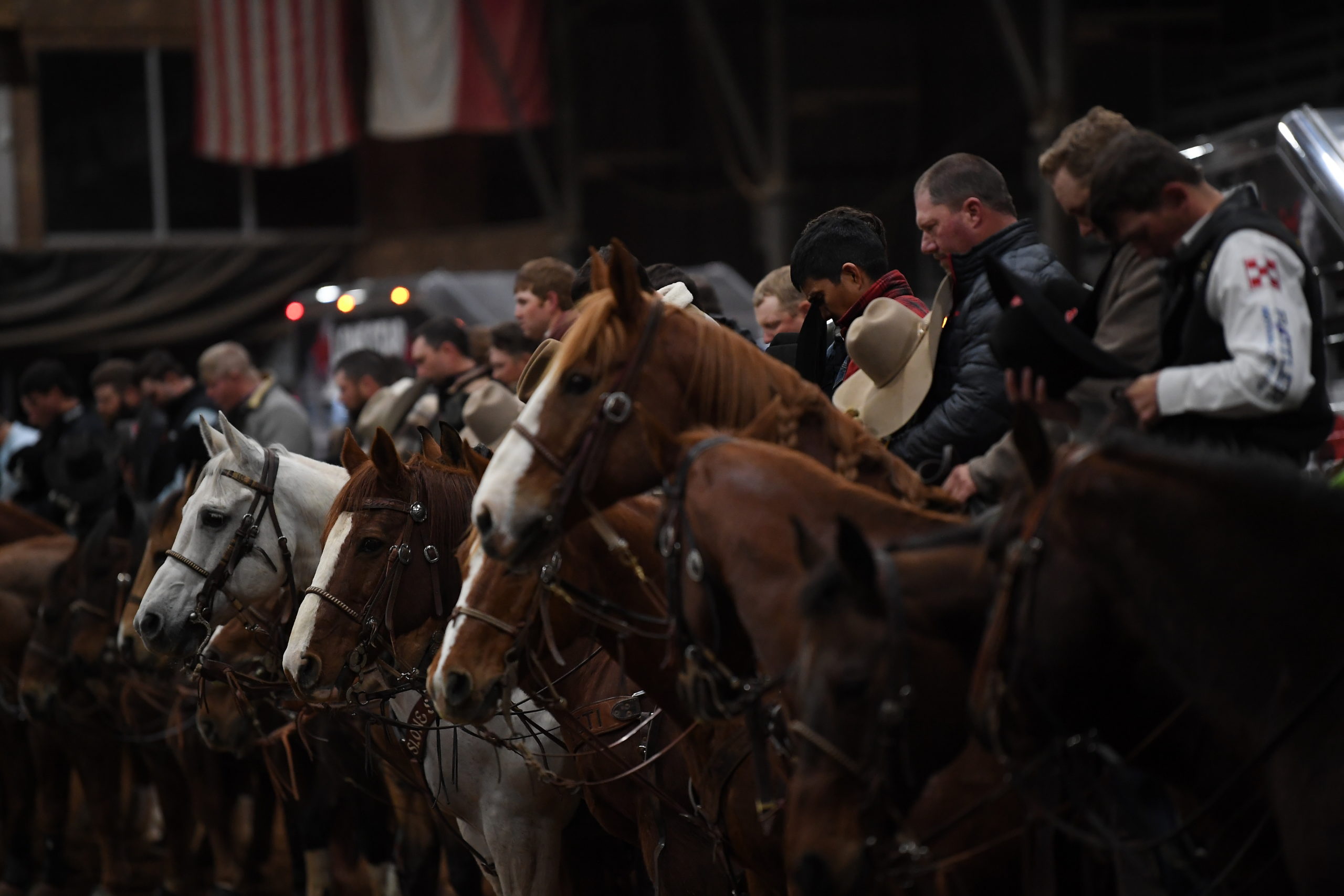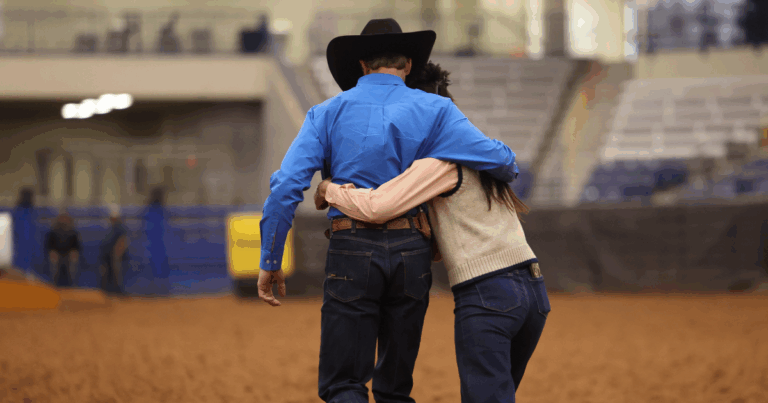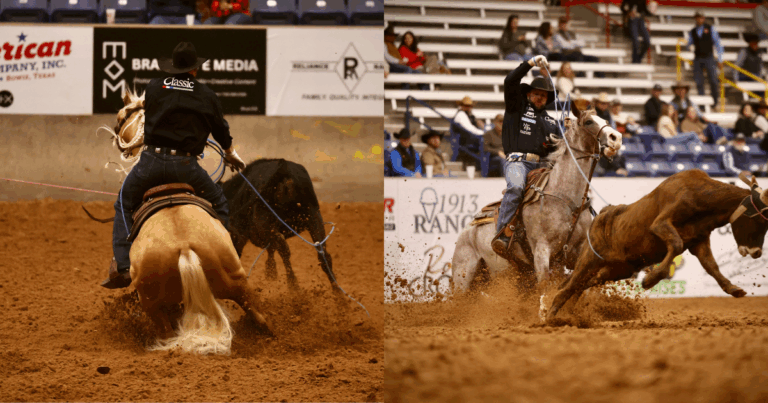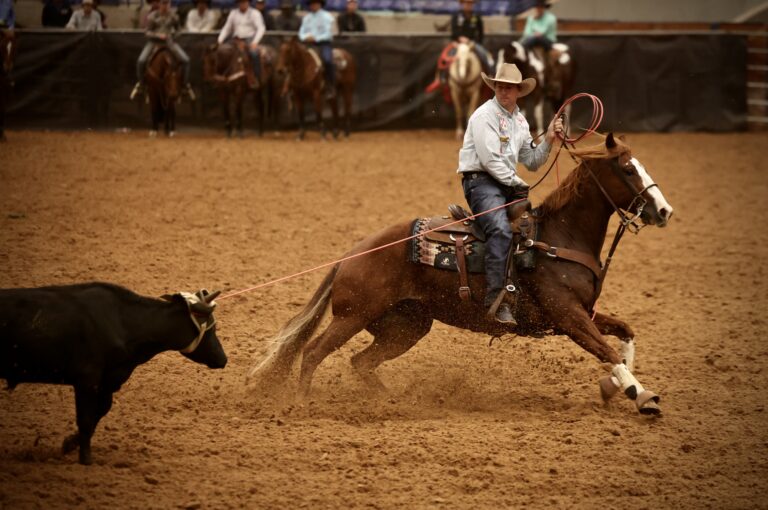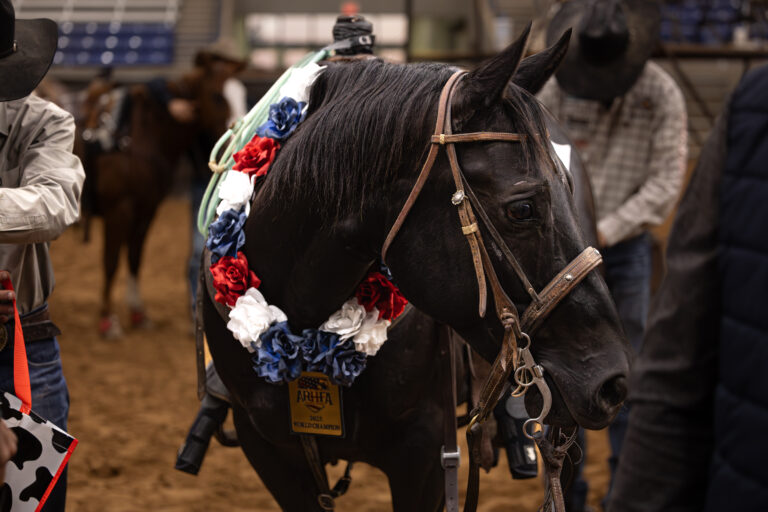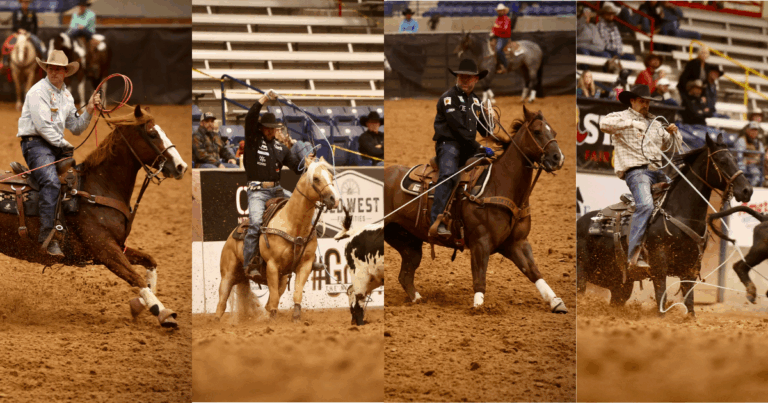With Ariat World Series of Team Roping Finale payouts at $13.8 million in December 2021 and the Wrangler National Finals rodeo topping $13.3 million at the same time, the Western industry is riding high as the year comes to a close, in spite of the challenges of the pandemic and political uprising.
It’s hard to imagine things could get much better. Ropers put up big money to gamble on their skill and their luck, and they come and shop and spend in Las Vegas in record numbers, year after year. But, believe it or not, many believe there’s still a relatively untapped market that lies underneath the ropers in this industry, providing even more room for growth. That market? The rope horse breeding and futurity business.
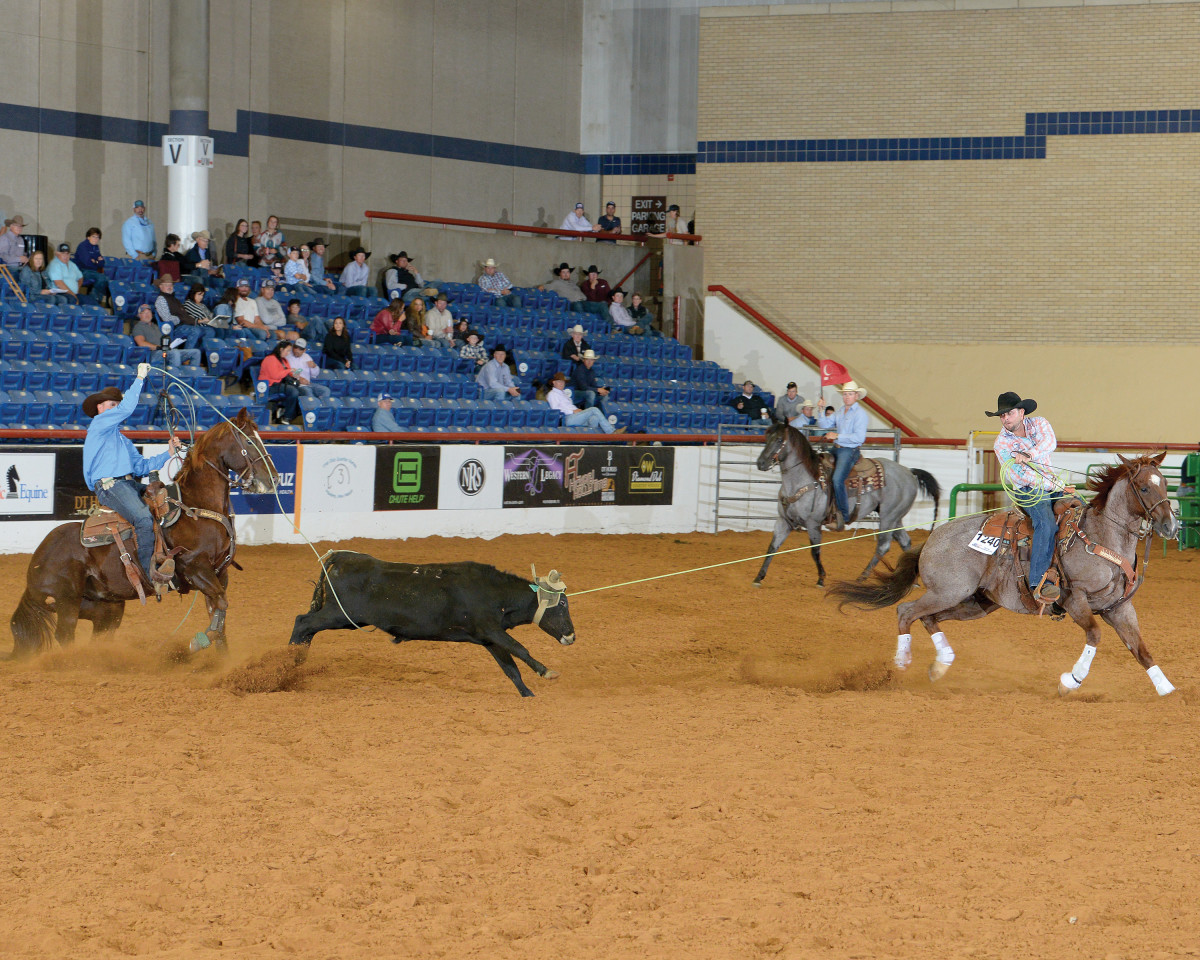
Bar H photography
The Current Rope Horse Futurity Climate
Jay and Lindsay Wadhams’ American Rope Horse Futurity Association has catapulted the rope horse training game to new heights over the last five years since its first World Championships in 2017.
That 2017 event hosted 218 teams in just its Open heading and heeling over one day. In 2021, the event boasted 1,036 entries across all disciplines—including 213 head horses and 273 heel horses in the Open divisions alone. The payout grew from $292,000 that first year to a massive $728,250, not including incentive payouts, in 2021.
“The initial added money is what made everything turn around,” founder Jay Wadhams said. “When we got the big money up, all the top team ropers came. I don’t believe it’s a stretch to say that all the top ropers are better horse trainers now because of what we’re doing.”
Indeed, guys like Trevor Brazile didn’t even enter that first year—they came and watched. In years since, Brazile and partner Miles Baker have maxed out their entries in pursuit of a futurity win, banking more than $115,000 in ARHFA World Championship earnings the last two years and winning tens of thousands of dollars more at the five qualifying events throughout the regular season.
“As far as the owners behind the futurity horses, it’s starting to get in the blood like those in the racehorse, cow horse and cutting horse businesses,” Wadhams said. “It’s starting to get in their blood that people want the winners, and they want the best guys riding their horses to make them that way.”
After that first year, Wadhams added a non-pro division to his events, allowing ropers with a 5.5 handicap or under to enter horses of any age to compete on the last day of the futurity over two full rounds and a short. In 2021, the event also offered a limited (5.5 header or lower, 6.5 heeler or lower) and intermediate (6.5 to 6 header, 8 to a 6.5 heeler) divisions for ropers.
“I want to pay the Open and Intermediate and Limited guys a lot more, so that’s the growth. I’d love for the Intermediate and Limited guys to win $20,000 and have 10 to 15 places in it. I want to keep those guys coming.”
In 2021, NFR heeler Matt Zancanella and partners Levi and Lindsey O’Keefe kicked off the Royal Crown Team Roping, too, bringing their barrel-racing stallion incentive concept into the team roping market.
“That incentive paid outstanding,” said Brazile, who won both the heading and heeling at the event in Rock Springs in August. “It gave me a taste of what a stallion incentive can really do because, on top of showing there, we also enrolled Show Me The Buckles, our stallion. It sparked an interest in that model.”
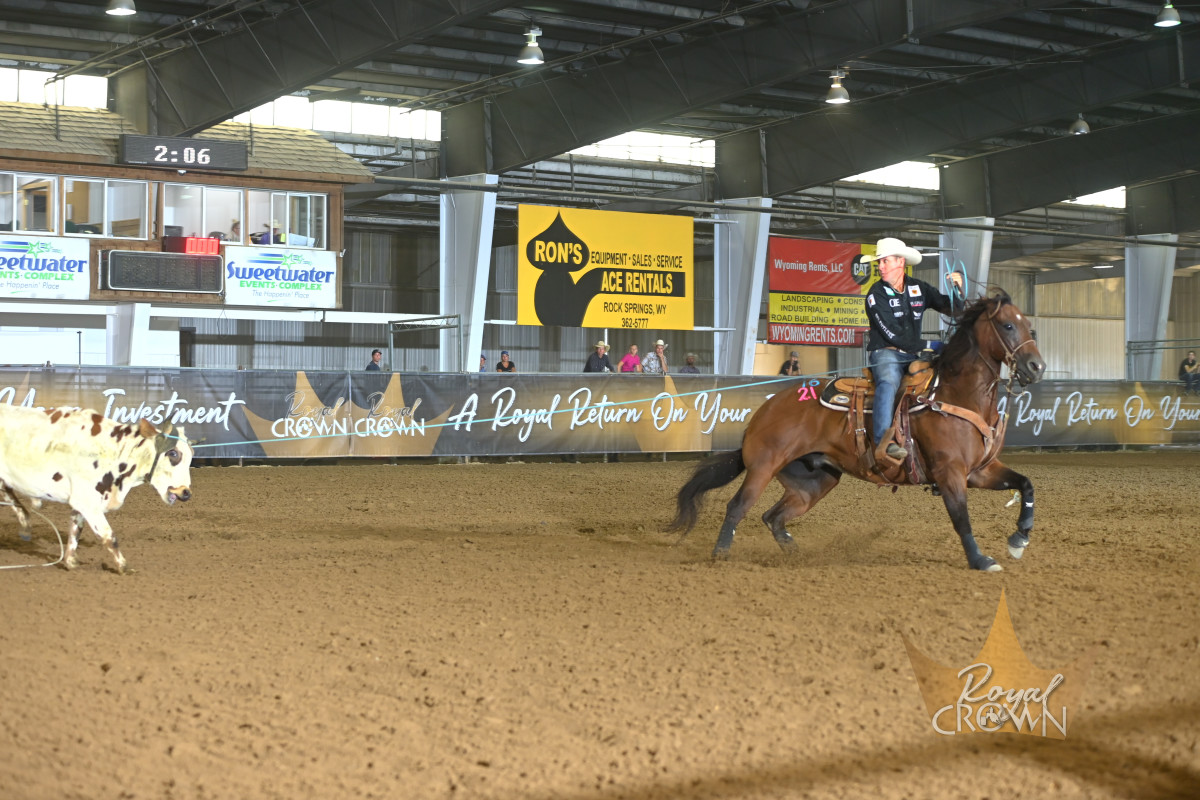
The Breeders’ Evolution
Meanwhile over in barrel-racer land, Spanish Fork, Utah, businessmen Lance Robinson and Chad Beus and their families kicked off the Pink Buckle—a cooperative of stallion owners established in 2018 who produce a $2-million barrel racing event fueled by the program’s stallion enrollment fees and progeny nominations. Held at Guthrie, Oklahoma’s Lazy E, the event is in its fourth year, and paid out $2.7 million to only nominated horses by Pink Buckle Stallions.
It skyrocketed the demand for breedings to Pink Buckle stallions and eligible offspring. The waiting list is years-long for stallions to get into the Pink Buckle program, with spots selling for hundreds of thousands of dollars from breeder to breeder.
“We started this model in the show horse world and moved it into the barrel racing world, and I’ve seen so many big things come from it,” said Beus, who originally showed halter horses and developed this model for the Breeder’s Halter Futurity. “It’s been big for breeders, competitors, trainers. Bringing it into the roping world, because it’s so large and there’s so many people and it’s such a family-oriented lifestyle, it’s important to finish what we’ve started in other disciplines because there’s so much upside to it.”
Robinson and Beus, also biotech business partners outside the horse world, did the same thing with a second tier called the Ruby Buckle, which enrolled more stallions than the Pink Buckle and offers three regional races, as well as a breakaway division. The combined payout of the Pink and Ruby Buckle in 2021 was in excess of $5 million, and the Pink and Ruby Buckles quickly became the world’s first and second richest barrel races.
Robinson, a former NFR steer wrestler and team roper himself and father of NFR tie-down roper Clint Robinson, had been watching the growth of the ARHFA and knew the opportunity existed to expand Beus’ model into the roping market.
“We were eventually going to get to team roping,” Robinson said. “My partner, Chad, started the Breeder’s Halter Futurity. That was a format he developed from the Quarter Horse racing and Thoroughbred racing. It’s a stallion-funded nomination program. It’s been so amazing for the halter horse business. That’s how we started the Pink Buckle, following the halter business. It was hard to get the stallions to buy into the Pink Buckle but, by the time we started the Ruby Buckle, they called us—we didn’t have to make one phone call. There are people who say the stallion spots will be a million soon. So now, when we get the rope horse thing going, we believe it can be successful, too.”
The secret sauce to making things work in the team roping business has long been USTRC/World Series of Team Roping Founder Denny Gentry, and Robinson and Beus knew that bringing Gentry on board would legitimize their pursuit.
“My plan after team roping was always the horse business, so this is perfect,” Gentry explained. “I appreciate their invitation and can guarantee the Riata event production will be top quality. More importantly I want to make sure that team ropers won’t be instantly turned off when they hear the word ‘Futurity.’
“The majority traditionally view futurities as horse show stuff. They need to hear us talking the talk, like $2 million guaranteed, and NO commissions from entry fees ever. They need to understand how much purse money will go to ropers on unnominated horses. We will make this so financially lucrative that team ropers won’t have a choice but to climb on board. I think everyone is going to be surprised the impact this group will bring. Once we hit $4 million and start rolling, it will be lots of fun.”
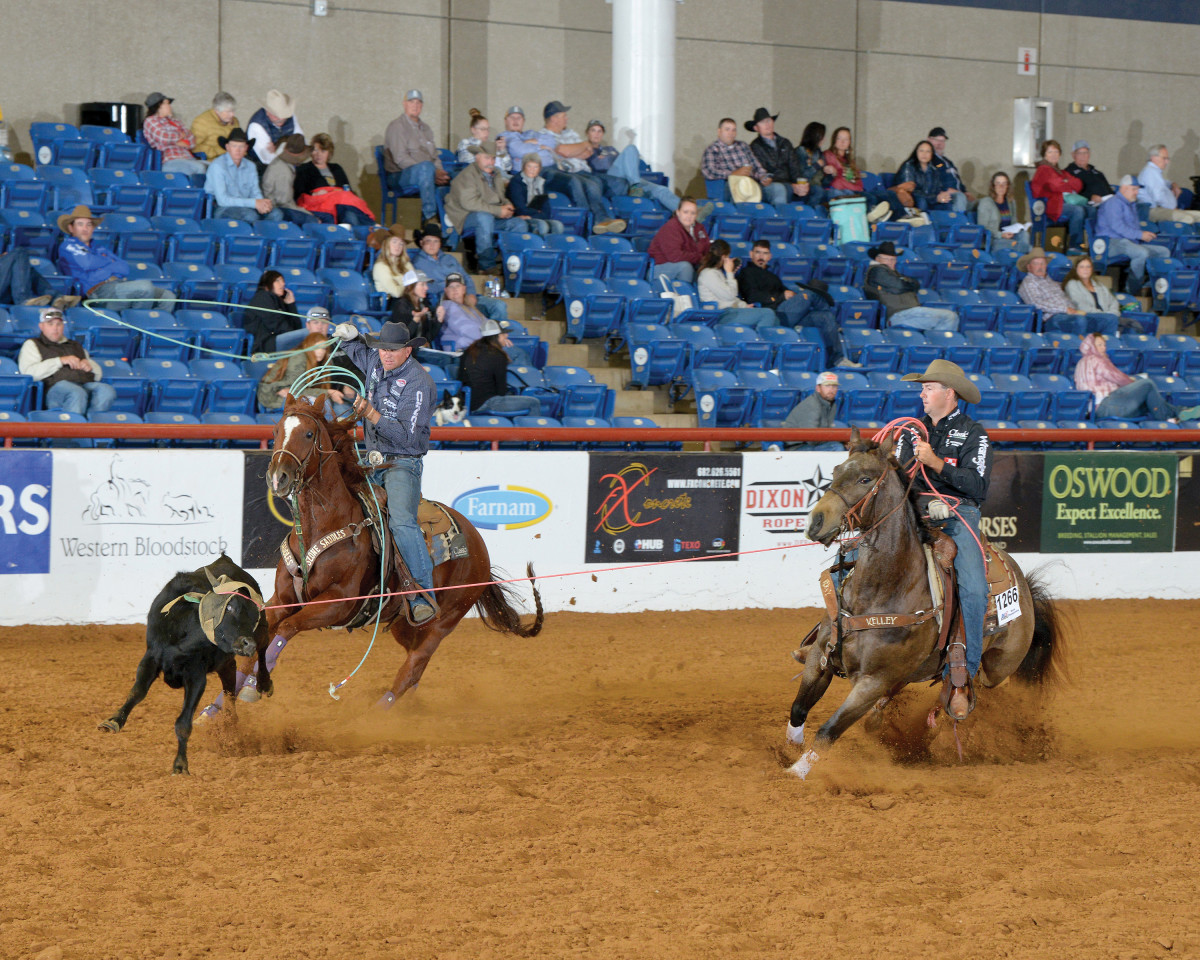
Bar H Photography
The Riata Buckle Format
It didn’t matter to breeders and stallion owners that organizers hadn’t announced a format or details when The Team Roping Journal rolled with a teaser on the Riata Buckle the third week in October.
“Our office lines and my cell phone rang all night,” Robinson said.
The Riata Buckle team is carefully reviewing the stallion applications and plans to launch the program with 150 stallions and to add more over time, capping the program at 200 total stallions. Stallions will pay an annual nomination fee of $10,000 per stallion. Those funds, along with progeny nomination fees of $200 annually and entry fees to the event, will allow the program to kick off with an intial $2-million guaranteed payout event in November 2022.
The stallions in the program will come from every discipline—from cow horses to cutters and reiners to race- and barrel-bred horses.
First and foremost, these futurities will be paid on time only, rather than judging, to take all subjectivity off the table.
“Pink Buckle has proven that when you open it up for everybody to participate, you have unlimited growth,” Gentry explained. “We think we can accelerate and supplement what all the other futurities are doing without interfering with them at all.”
The Riata Buckle Futurity will be split into two futurities for Riata horses, all age 5 and younger. Over time, breeders and ropers will come to call these futurities the “Upper” Futurity and “Lower” Futurity. These will be slide ropings, using Global Handicaps to determine the numbering. The “Lower Slide” is a #10.5 slide roping. Teams may enter as a #9.5 team, #10.5 team or #11.5 team. The #10.5 teams will have straight times, the #9.5 teams will subtract 1.5 seconds, and #11.5 teams will add 1.5 seconds. The “Upper Slide” is a #13.5 slide roping. Teams may enter as a #12.5 team, #13.5 team or# 14.5 team. The #13.5 teams will have straight times, the #12.5 teams will subtract 1.5 seconds and #14.5 teams will add 1.5 seconds.
The Riata Buckle will also feature two aged events, and it will mirror their futurity program. It will be for horses ages 6 and over, offering the same divisions.
“Obviously, when you see a slide setup, you are inviting every handicap to the party,” Gentry said. “With three divisions in each futurity, and three in each aged horse event, that will give us lots of room to grow. Over time, we hope this program will produce hundreds of new rope horses.”
Entries for the Riata Buckle will be $1,000 per nominated horse, or $2,000 per team. If a team contains an un-nominated horse, the entry fee for the un-nominated horse is $1,500, or $2,500 per team of one nominated and one not. Owners and breeders may enter an unlimited number of horses; however, contestants and riders will be limited to two entries per futurity regardless of whether they are riding a nominated or un-nominated horse, and regardless of end.
“In a nutshell, this program ties the young horses together with the guys who are competing at the World Series events,” said Dean Tuftin, NFR heeler and owner of DT Horses. “Now they can see themselves roping on them in the lower divisions. It’s the next natural step in the industry.
“The timing is perfect right now,” Tuftin added. “The ARHFA has done a great job of showcasing the open horses, putting on these events and promoting this. Denny is the king of that. They can co-exist. People will always want to watch the best guys on the best horses. There will always be a spot for that. But for the World Series guys who are looking for horses, this gives them a chance to compete on young horses and join in on the fun.”
Tuftin plans to enroll his great stallion Hickory Holly Time in the program, considering he’s got dozens and dozens of colts on the ground within his own program to roll out. But the program isn’t just for the high-end cutting and cow-horse studs. No, the goal is to build out the entire rope-horse-specific breeding side of the business—drawing the attention of breeders like Jim Brinkman of the Pitzer Ranch.
“The ropers never got together to do something as organized as the cutters and the barrel racers have done,” said Brinkman, who plans to enroll four stallions. “With Denny and Lance, there’s a good chance it could work. Our horses are bred to be rope horses, and it fits our program very, very well. There’s a bunch of little rope horse programs popping up, but there’s nothing centralized and big enough to get the AQHA and records on these horses. If we can get the winnings from the bigger events on these rope horses, we can make the rope horse as big as the Thoroughbred racehorse deal because there’s that much money thrown around. Hopefully, this is a vehicle to help it start. If this deal works, we can get the World Series and USTRC and maybe PRCA rodeos involved in tracking money, and people will finally figure out there’s enough money in raising rope horses. This might be a vehicle to start it that way. These guys have proven they can do this.”
The tracking element on horses—in partnership with the AQHA—is a key component to this business model. A partnership with the Equine Network—owners of the Global Handicaps database—will share information on winnings and past winnings as another key component of the program. Riata will marry those two together. The difference? Something between the current zero winnings reported and the $70 million actually paid out each year in team roping.
For Robinson, the goal is simple: define the rope horse breeding market.
“Our intent is to develop a roping horse breed. We have a cutting horse breed, reining horse breed, racehorse breed, halter horse breed. There’s certain types of using horses that really work. If you said, ‘What’s a rope horse bred like?’ nobody knows the answer to that. There’s certain stallions that have been instrumental as of late, but a lot of it’s been old race horses. There’s not really a line that’s been singularly promoted. Where’s the Dash Ta Fame of the rope horse world? I don’t think we’ve identified that yet. As we go along, there will be a lot of horses that come to the surface.”
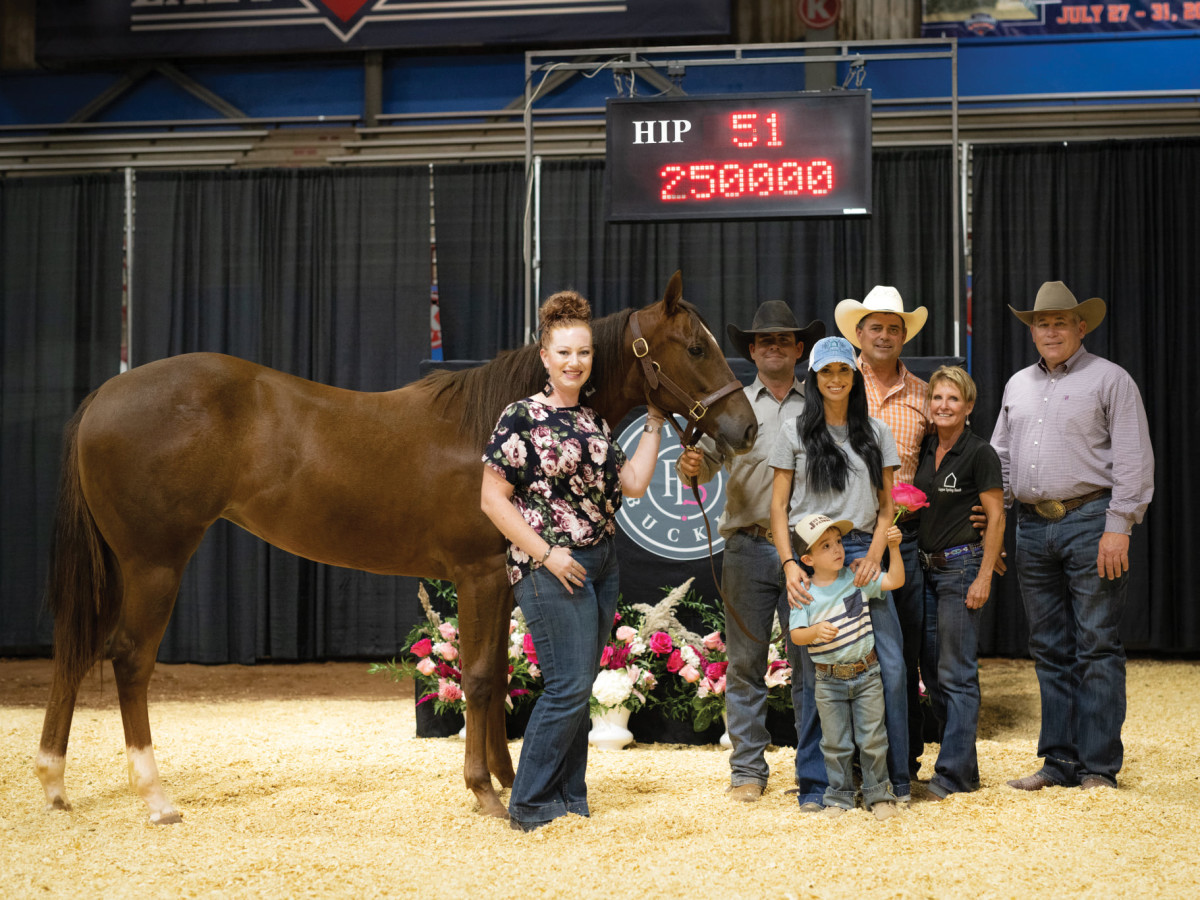
Courtesy Savannah Magoteaux
SOLD!
The Pink and Ruby Buckles both offer an exclusive, stallion-owner only horse sale. The Riata Buckle will do the same. But why?
“I don’t think anybody understands the reasoning—why we do the sale in the Pink Buckle—a lot of people think it’s another way to generate money,” Beus explained. “The idea is to allow each Pink Buckle and Ruby Buckle stallion owner to have two horses in the sale, to bring horses that represent their program. It helps them set the value for the horses throughout the industry. It gives people a feel for the quality and value. It gives these stallion owners a place to represent their breeding programs. In fact, our sale loses money because we have an incentive for it that pays out way more than the sale revenue. But it’s important for us that our stallion owners have a place to show their horses and establish a value throughout the year.” TRJ




